Thank you for sharing this good recipe!
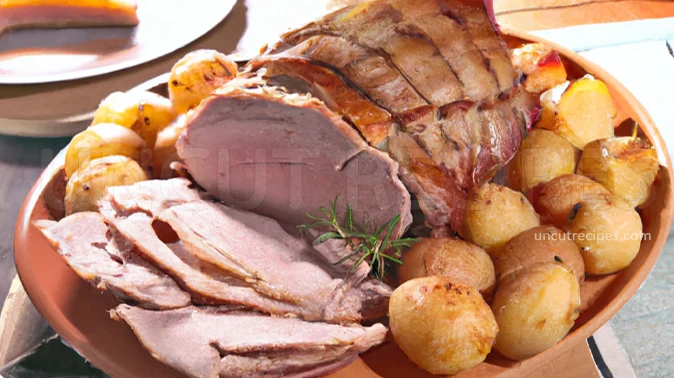
Imagine a perfectly roasted, succulent veal loin surrounded by golden, crispy-on-the-outside, fluffy-on-the-inside potatoes. All these flavors come together, creating a harmonious symphony of taste, elevated by the aromatic infusion of rosemary, sage, and garlic. Each bite of the tender veal paired with a forkful of robust potatoes will have you nodding in approval.
While the term 'roast' might sound intimidating, it's simply about embracing the slow, the patient, and the flavorful. We are tying up our veal loin, seasoning it to perfection, searing it, and then leaving it to mingle with the potatoes in the oven's warm embrace. The delicious white wine and beef broth poured over the veal work their magic, creating a fantastic gravy that's perfect for ladling over the finished dish.
We've all had those days when all you want is a warm, savory, fulfilling meal. This recipe is exactly for those days. It might not be flashy or exotic, but it’s the kind of cooking that speaks directly to the soul, reminding us that sometimes, the simplest ingredients, when combined with love and attention to detail, can create the most extraordinary meals.
JUMP TO:
INGREDIENTS:
Loin of Veal Selection: Veal is a delicate, tender meat with a mild flavor, and the loin is one of the best cuts. When selecting veal, look for a pinkish-white color with a fine grain and firm texture. The fat should be creamy white and there should be minimal marbling. A well-selected loin will ensure a tender, flavorful dish. If veal is not available or you prefer a different meat, pork loin can be a good alternative due to its similar texture and flavor.
Potatoes Choices: This is a versatile ingredient and the variety of potato you choose can impact the texture and taste of your dish. For roasting, seek out starchy or all-purpose varieties like Russet or Yukon Gold, as they are good at absorbing flavors and get a nice crispy exterior. They should be firm, smooth, and free of sprouts or green discoloration.
White Wine Selection: The wine doesn't just add liquid to the dish, it also imparts flavor. A dry, acidic white wine will balance the rich flavors of the veal and potatoes. Consider a Sauvignon Blanc or a Pinot Grigio. For those who do not consume alcohol, an alternative could be a mix of white grape juice with a splash of white wine vinegar or lemon juice to mimic the acidity of wine.
MAIN STEPS:
Securing the Veal: When tying the veal, aim for a firm but not overly tight tie. This process is important for maintaining a uniform shape during cooking, which promotes even heat distribution and a more predictable cooking time. Using kitchen twine is the best option here, but be sure it's a heatproof and food-grade material.
Balancing Flavors with Seasonings: Salting both sides of the veal is vital to bring out its subtle flavors. Additionally, the incorporation of rosemary and sage imparts a wonderful depth to the meat. Be careful with your salt usage; you want to enhance the natural flavor of the veal without overpowering it.
Sauteing the Veal: This step allows for a beautiful brown crust to develop on the veal, which is an essential part of the flavor profile. Pay close attention to the heat and be careful not to burn the meat or the herbs. Also, remember that the cooking process continues in the oven, so at this stage, you're aiming for a good sear rather than cooking the veal all the way through.
Infusing the Veal: The order of adding the wine, broth, and oil is crucial. Letting each liquid absorb for a minute allows for the flavors to soak into the meat. It's important to use a fork to create deep holes in the meat so the liquids can penetrate more deeply, enhancing the overall flavor.
Resting the Veal: It's essential to allow the veal to rest in a warm place after baking. This resting period lets the juices redistribute throughout the meat, leading to a more tender and flavorful dish.
Sauce Creation: The final sauce thickening process must be executed carefully. Adding flour slowly and stirring constantly prevents lumps from forming. Remember, this sauce is the finishing touch to your dish; it should be velvety and rich, not clumpy or overly thick.
SERVED WITH:
Starter: Caprese Salad (Italy): This simple, fresh salad consists of sliced fresh mozzarella, tomatoes, and basil, seasoned with salt, pepper, and a drizzle of olive oil. It comes from the Italian region of Campania and provides a light, flavorful beginning to balance the heavier main course of roasted veal and potatoes.
Side Dish: Ratatouille (France): A traditional French Provençal stewed vegetable dish that originates from Nice. The stew includes a variety of colorful vegetables like eggplants, zucchinis, bell peppers, and tomatoes, making it a wonderful and vibrant companion to the veal.
Side Dish: Grilled Asparagus (Worldwide): Asparagus stalks grilled until tender and dressed with a squeeze of fresh lemon juice. It provides a light, citrusy counterpoint to the rich, savory flavors of the roasted veal.
Dessert: Tarte Tatin (France): A classic French upside-down tart made with caramelized apples and puff pastry. Its sweet and slightly tangy flavor would be a lovely ending to a meal featuring roasted veal.
Cake: Sacher Torte (Austria): This is a specific type of chocolate cake, invented by Franz Sacher in Vienna, Austria. The cake is a dense chocolate cake with a thin layer of apricot jam on top, coated in dark chocolate icing. Its richness would match well with the hearty main course.
Drink: Chianti (Italy): This is a robust, dry red wine from the Chianti region in Central Italy. Its flavors of cherry, plum, spice, and herbs pair wonderfully with the richness of the roasted veal and the savory potatoes.
ALTERNATIVES:
Main Course: Beef Bourguignon (France): A classic French dish where beef is slow-cooked in a rich wine sauce with mushrooms, pearl onions, and carrots. Instead of veal, beef is used but it provides a similar hearty satisfaction.
Main Course: Lancashire Hotpot (England): Originating from the county of Lancashire, this dish is a slow-cooked stew that traditionally contains mutton, onion, and potatoes, covered with a layer of sliced potatoes.
Main Course: Osso Buco alla Milanese (Italy): This Italian specialty replaces the veal roast with braised veal shanks and is traditionally served with gremolata and risotto alla Milanese.
Side Dish: Dauphinoise Potatoes (France): This classic French dish comes from the Dauphiné region. It's a rich potato dish made with cream, milk, garlic, and nutmeg, which can be served as a delicious side to any meat course.
Dessert: Apple Strudel (Germany/Austria): A layered pastry filled with apples, sugar, and cinnamon. Keeping with the potato component but offering it as a sweet course, the strudel is a nice alternative.
Cake: Potato Chocolate Cake (USA): This unique cake uses mashed potatoes for a moist texture, paired with rich cocoa for a deliciously surprising dessert.
Drink: Craft Beer (Worldwide): Craft beers can range from light and refreshing to dark and heavy, making them a versatile accompaniment to a variety of dishes. For a meal like the roasted veal and potatoes, a Belgian-style Dubbel or Tripel with their robust flavors and slight sweetness could pair well.
HISTORY:
To the culinary historian, the enduring charm of Roasted Veal with Potatoes lies not just in its robust flavors, but also in its rich history woven into the fabric of Italy's gastronomical culture.
The origins of this dish are a little hazy, as is the case with most traditional recipes, but it's generally accepted that the dish evolved out of necessity and practicality. As any Italian nonna will tell you, the key to good cooking is making the most of what you have, and in the regions of Lombardy and Piedmont, veal was often at hand.
Veal, derived from vitello in Italian, has been an integral part of Italian cuisine for centuries. In fact, the Romans were known to enjoy veal, which they cooked with fruits and sauces. However, the current method of roasting veal likely developed in the Middle Ages with the advent of roasting spits.

Then, there are the potatoes. Though native to the Americas, the potato was introduced to Europe, including Italy, in the 16th century. Initially viewed with suspicion, it eventually became a staple in many households for its versatility and nutrient content.
Pairing veal with potatoes is a practical solution and an ideal way to create a filling, nutritious meal. The fat rendered from the veal flavors the potatoes beautifully, while the latter, in turn, absorb and compliment the meat's savory taste.
Throughout Italy, you'll find regional variations of Roasted Veal with Potatoes, each with unique local touches. In Lombardy, for example, the dish might be cooked with the region's famous Gorgonzola cheese, while in Piedmont, renowned for its wines, a generous pour of Barolo or Barbera could be used to deglaze the pan and make a flavorful sauce.
TIPS:
Seasoning: Season your veal loin with salt at least a few hours before roasting, or even overnight if possible. This gives the salt time to penetrate the meat and improve its flavor from within.
Searing: When searing the veal in the pan, it's important to achieve a rich, golden-brown crust, as this enhances the overall flavor of the dish. Try using a high-heat resistant oil like grapeseed oil for a better sear.
Aromatics Infusion: Infuse the oil with your aromatics (garlic, rosemary, and sage) before searing the veal for a more flavorful oil. Remove the aromatics after infusing so they don't burn during the searing process.
Veal Temperature: Make sure the veal is at room temperature before roasting. This ensures even cooking. Similarly, letting the meat rest after cooking allows the juices to redistribute, ensuring a moist and flavorful roast.
Roasting Rack: Use a roasting rack to lift the veal off the bottom of the roasting pan. This allows heat to circulate evenly around the meat, ensuring it cooks evenly.
Deglazing the Pan: After searing the veal, deglaze the frying pan with a little bit of white wine or broth to capture all the flavorful bits stuck to the bottom. This can be added to the sauce for extra flavor.
Potatoes: Parboiling the potatoes before roasting can help achieve a fluffy interior and a crispy exterior. You can also try roasting the potatoes in duck fat or beef tallow for added flavor.
Sauce: Consider reducing the filtered pan juices with a splash of good quality wine for a more flavorful sauce. Additionally, using a roux (cooked butter and flour) to thicken the sauce can result in a smoother consistency compared to adding raw flour directly.
Additional Flavors: Truffle oil or truffle salt could be added to the dish to provide an extra level of flavor and sophistication. Be cautious, truffle has a strong flavor, so a little goes a long way.
Experiment with Herbs: Other hardy herbs like thyme or bay leaves could also be added to the roasting pan for an additional flavor profile.
Recipe Information
Skill Level
|
Time 1h 30 Minutes |
Price
|
Serves 1 to 8 People |
| Healthiness |
Nutritional Information |
| Ratings (Add Rating & Review) |
Reviews 24 Reviews |
Ingredients:
-
Potatoes ( for 4 people )
Loin of Veal ( for 4 people )
0.5 cup White Wine
Beef Broth
( or Vegetable )
Extra Virgin Olive Oil
6 Rosemary Sprigs
3 Garlic Cloves
20 Sage Leaves
Ground Pepper
Salt
Allergens
| Sulphites |
Directions:
01 - Heat the oven to 180C / 356F.
02 - Tie the Veal Meat.
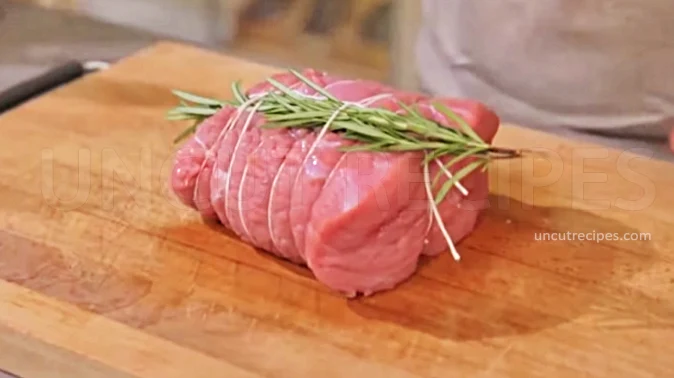
03 - Place it into a large frying pan.
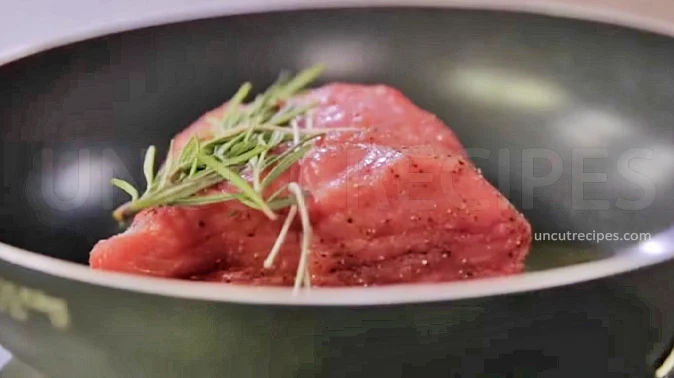
04 - Pour the Oil all over the Veal Meal and place Rosemary Sprigs and Sage Leaves beneath the cord.
05 - Sprinkle with Salt and Black Pepper. Flip the meat and sprinkle Salt and Pepper underneath too.
06 - Saute' the Veal over medium fire.
07 - In the meantime, peel the Potatoes and cut them into chunks.
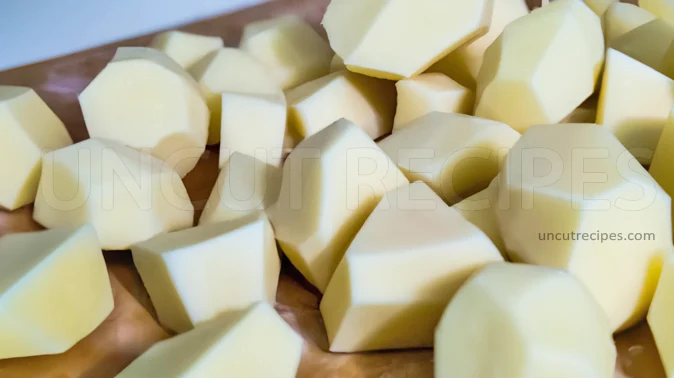
08 - Move the browned Veal in the center of a large oven dish, and place the Potatoes all around.
09 - Sprinkle the Potatoes with Salt, Pepper, Cloves of Garlic and chopped Rosemary and Sage Leaves.
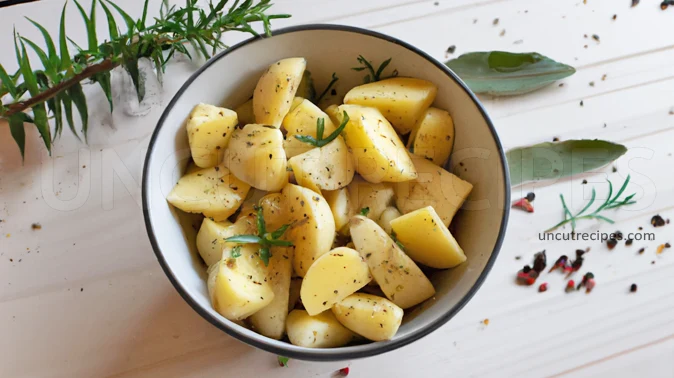
10 - With a fork, pinch some deep holes in the Veal Meat and pour all over ( in this order ) White Wine, Broth and Oil. Let each fluid be absorbed by the meat for 1 meanute.
11 - Bake for 1 hour. After 30 minutes, using a spoon, take some juice and pour it back over the Veal. Bake for final 30 minutes.
12 - Turn the oven off.
13 - Move the Potatoes from the dish to a separate plate, and the remainin juice into a small clean frying pan. Cover the dish with the Veal with kitchen foil to keep it warm into the oven.
14 - Filtrate and boil the Sauce and thicken it by adding some flour.
15 - Serve the Roasted Veal and Potatoes together topping with some Sauce.
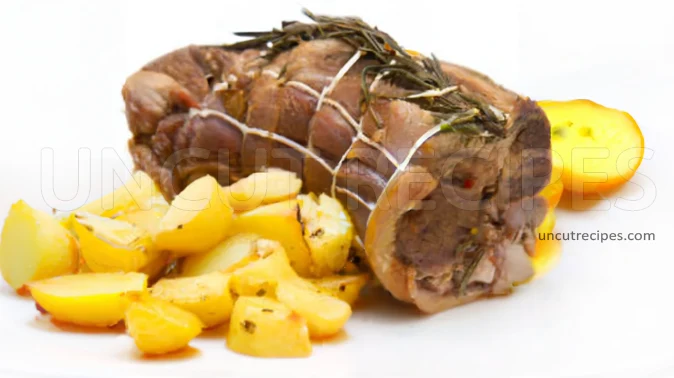
Notes:
More Sauce: If you want more Sauce, when you boil it, add some extra Broth, water and/or Wine.
Overcooking: Be careful not to overcook the Roast because you might risk to ruin it. It is useful to remember that for every kg / 1.1lb of meat, it's required about 1 hour of baking.
Alternatives: Veal loin is recommended in this recipe, but you can also use veal roast or veal shoulder.
Tying the Meat: Tying the veal helps it maintain its shape and cook evenly. Use kitchen twine for this. If you are not comfortable with this step, you can ask your butcher to do this for you.
Fresh Herbs: Fresh rosemary and sage are used here, but you can also use thyme or marjoram.
Browning the Meat: Browning the veal adds depth of flavor to the dish. Make sure your pan is hot before adding the meat to achieve a nice sear.
Leftovers and Storage: Store leftovers in an airtight container in the fridge for up to 3 days. Reheat in the oven or on the stovetop over medium heat until heated through.
Wine Pairing: Consider pairing this dish with a medium-bodied red wine that can complement the rich flavors of the veal and potatoes.
Additional Side Dishes: Although this recipe includes potatoes, you can serve this with additional side dishes if desired. Green vegetables or a simple salad would pair well.
Freezing: It's not recommended to freeze this dish as the potatoes might change in texture when thawed and reheated. However, the veal can be frozen separately for up to 2 months.
Nutritional Information
( Per Portion )
|
Calories |
690 kcal (34.5%) |
| Total Carbohydrate | 55g (20%) |
| Cholesterol | 170mg (57%) |
|
Total Fat |
30g (46%) |
| Saturated Fat | 9g (45%) |
| Polyunsaturated Fat | 3g (000%) |
| Monounsaturated Fat | 15g (000%) |
| Trans Fat | 0.5g |
| Fibers | 7g (28%) |
| Protein | 50g (100%) |
| Sugar | 3g (12%) |
|
Vitamin A |
50 IU (1%) |
|
Vitamin B1 (Thiamin) |
1.4mg (117%) |
| Vitamin B2 (Riboflavin) | 1mg (77%) |
| Vitamin B3 (Niacin) | 14mg (88%) |
| Vitamin B5 (Pantothenic Acid) | 2mg (40%) |
| Vitamin B6 | 1.5mg (88%) |
| Vitamin B7 (Biotin) | 30mcg (100%) |
| Vitamin B9 (Folate) | 80mcg (20%) |
| Vitamin B12 | 1.5mcg (63%) |
| Vitamin C | 30mg (33%) |
| Vitamin D | 10 IU (50%) |
| Vitamin E | 4mg (27%) |
| Vitamin K | 10mcg (8%) |
| Choline | 150mg (27%) |
| Carnitine | 20mg |
|
Calcium |
60mg (6%) |
|
Chloride |
200mg (8%) |
| Chromium | 12mcg (34%) |
| Copper | 0.5mg (56%) |
| Fluoride | 3mcg (0.1%) |
| Iodine | 50mcg (33%) |
| Iron | 6mg (33%) |
| Magnesium | 90mg (21%) |
| Manganese | 0.5mg (22%) |
| Molybdenum | 45mcg (100%) |
| Phosphorus | 500mg (40%) |
| Potassium | 1500mg (32%) |
| Selenium | 45mcg (82%) |
| Sodium | 200mg (9%) |
| Sulfur | 800mg |
| Zink | 5mg (45%) |
* Percent Daily Values are based on a 2,000 calorie diet. Your daily values may be higher or lower depending on your calorie needs.
** Nutrient information is available for all ingredients in this recipe. Amount is based on available nutrient data collected from all over the internet.
(-) Information is not currently available for this nutrient. If you are following a medically restrictive diet, please consult your doctor or registered dietitian before preparing this recipe for personal consumption. |
| Written by: Uncut Recipes | Disclaimer |





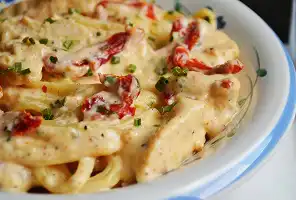
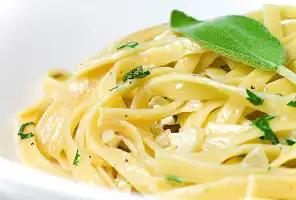
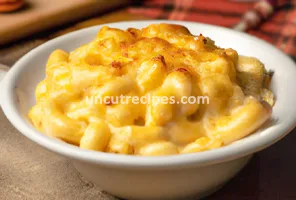
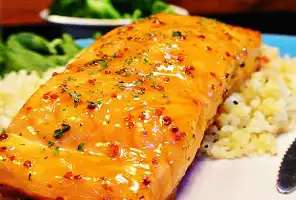

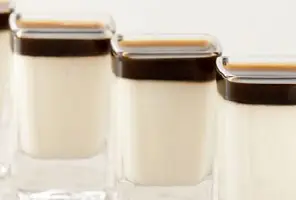
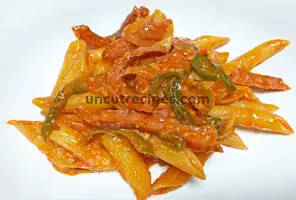

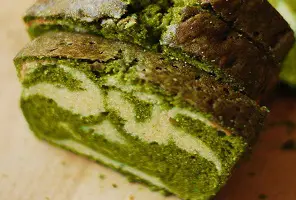
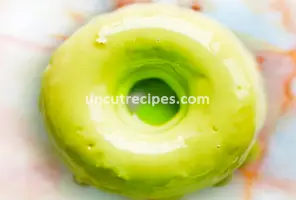
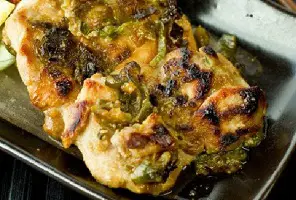
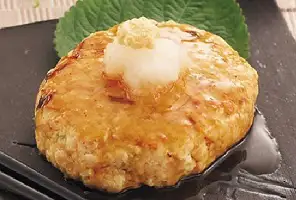

March 26, 2023
I used a 1kg piece of veal and it tasted great!